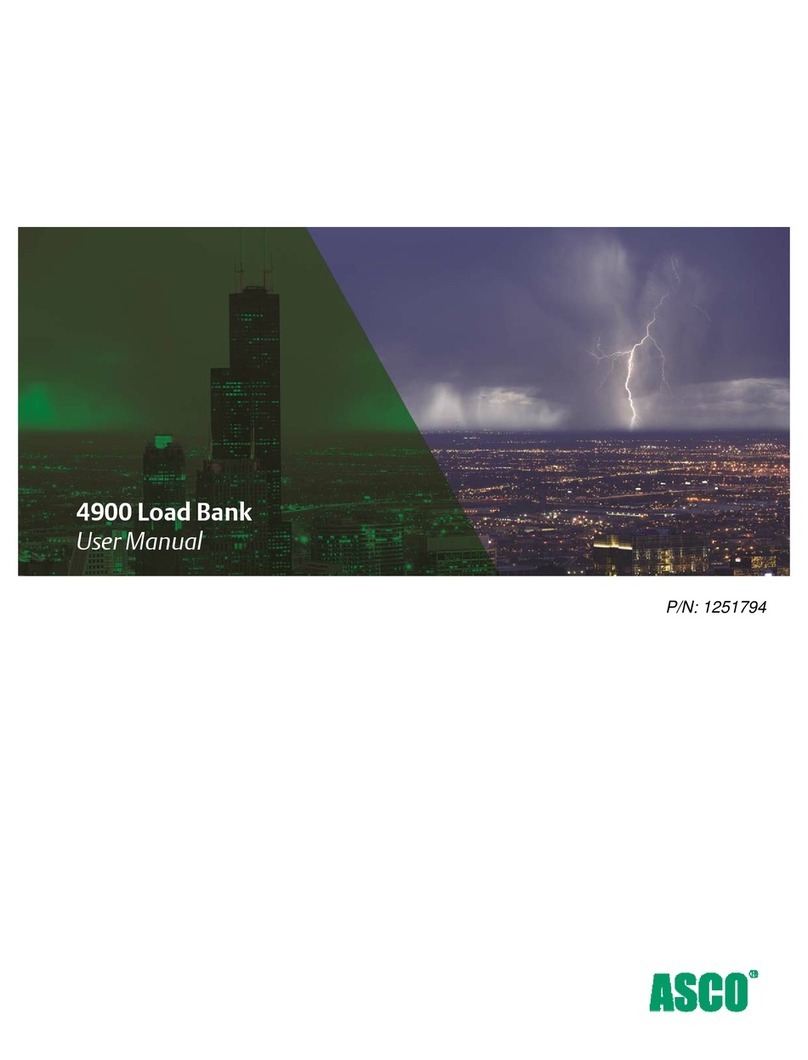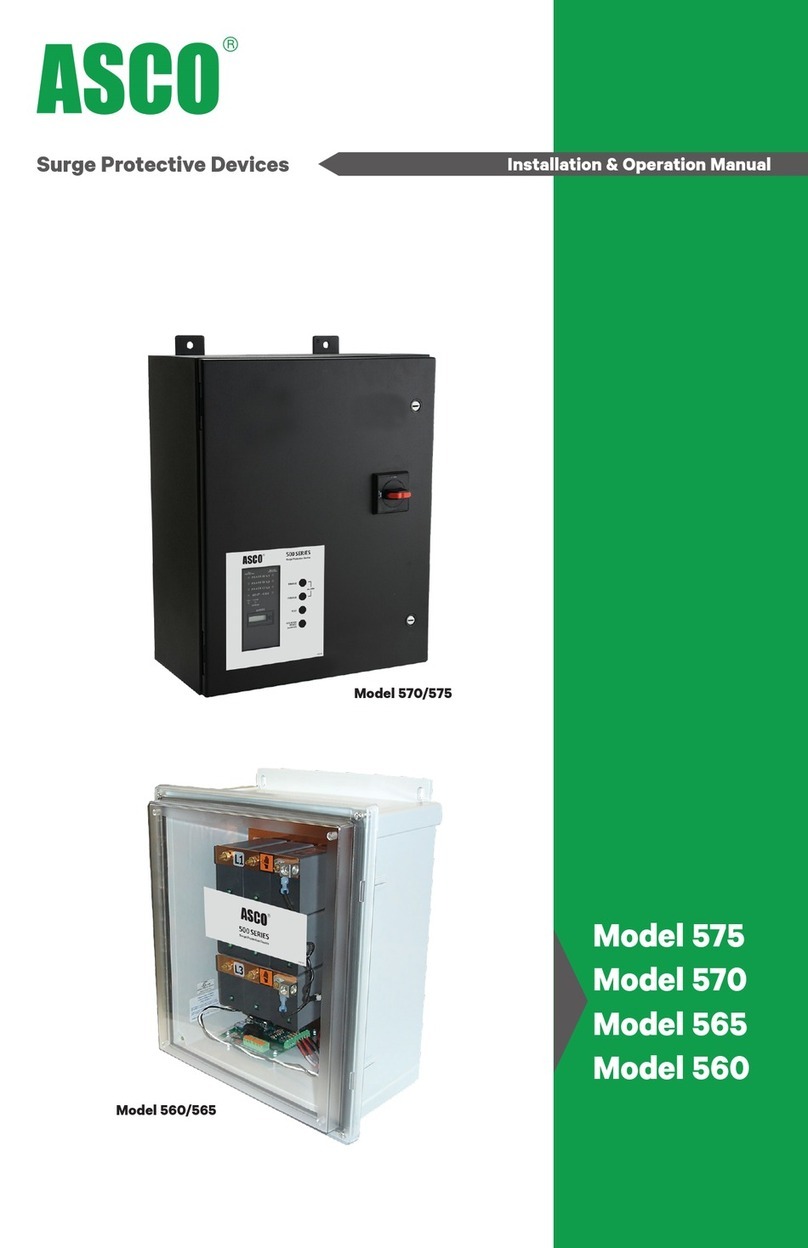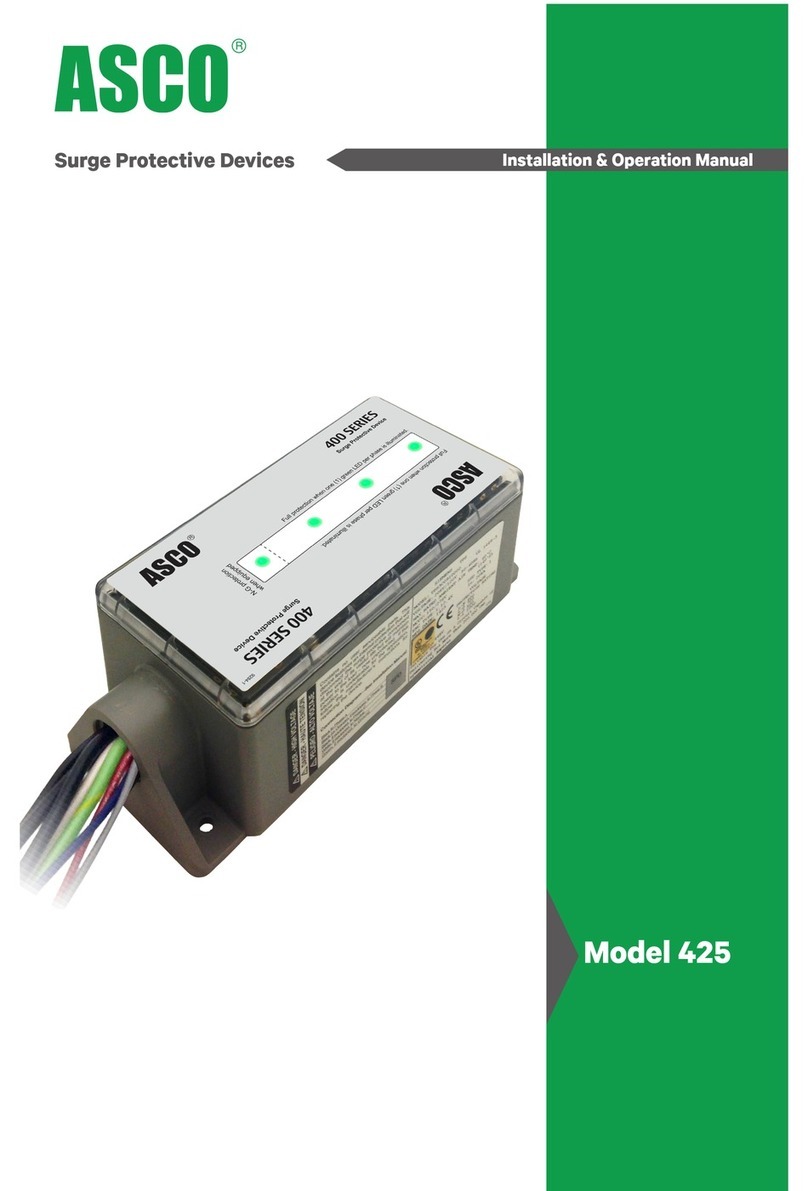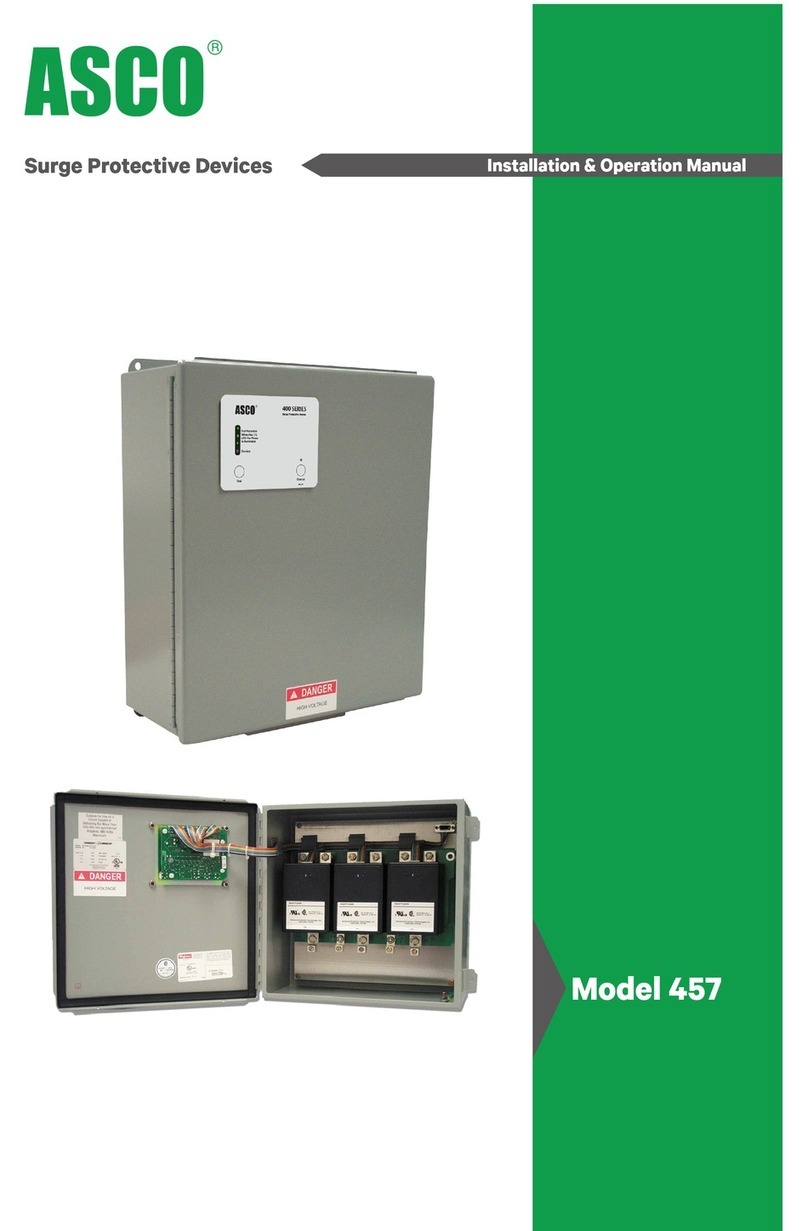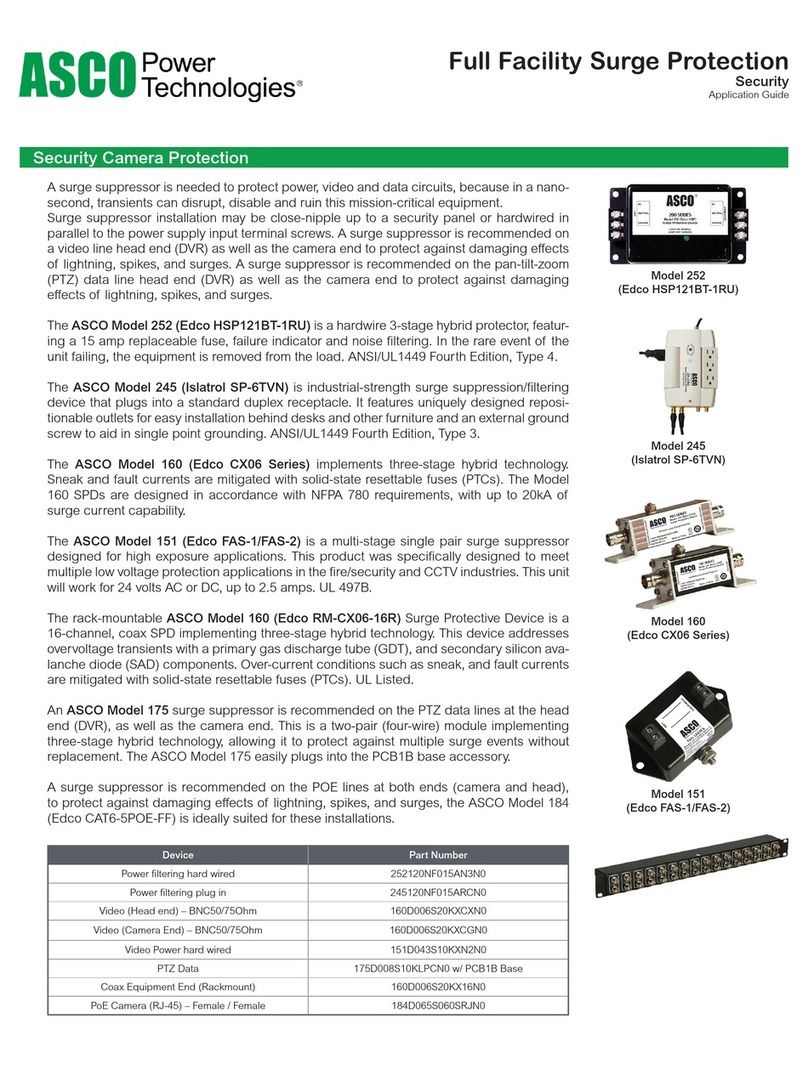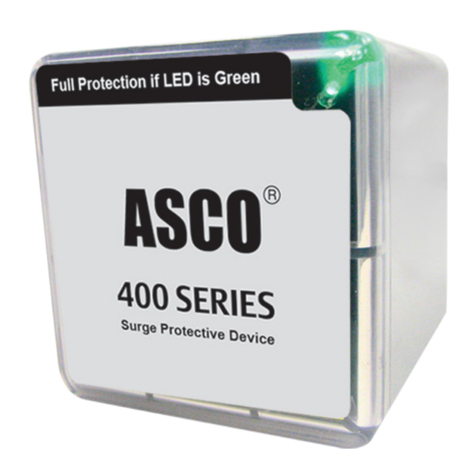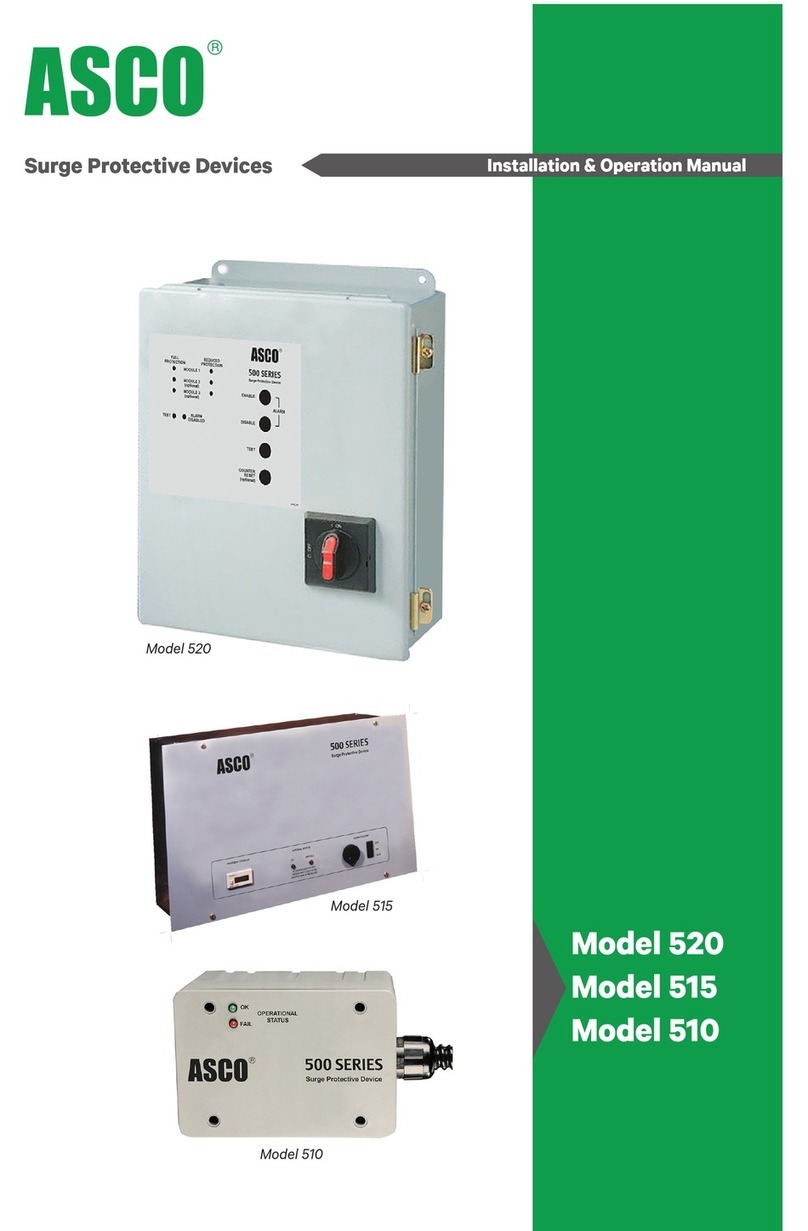
Installation, Operation and Maintenance Manual IO-70074 Rev- 04-197
Voltage Protection Ratings
To obtain the voltage protection ratings (VPRs), as obtained by Underwriters Laboratory, Incorporated,
in accordance with the Standard for Safety, Surge Protective Devices (SPDs), Standard 1449, Fourth
Edition, marked on this product, the wire size listed for each product must be utilized to connect the
unit to your facilities’ power grid. Connections made with conductors other than the wire size listed
may result in dierent VPRs.
Circuit Ampacity Limitations
Representative samples of these products have been investigated by Underwriters Laboratories,
Incorporated to withstand, without exposing live circuits or components at system voltages and fault
currents up to 200,000 AIC, as described in the Standard for Safety, Surge Protective Devices (SPDs),
Standard 1449, Fourth Edition.
System Grounding and Bonding
The performance and safety of any SPD system is dependent on proper grounding and bonding.
Grounding is required for safety. Correct implementation also enhances equipment performance.
Incorrect grounding can reduce or impede the SPD’s operation. All electrical circuits to the SPD must
include an equipment- grounding conductor as required by the NEC and local codes.
An insulated grounding conductor is required in addition to any metallic raceway, which may be used
as a grounding conductor. For parallel-connected SPDs, the grounding conductor should be the same
wire size as the associated power conductors.
UNGROUNDED POWER SYSTEMS ARE INHERENTLY UNSTABLE AND CAN PRODUCE
EXCESSIVELY HIGH LINE-TO-GROUND VOLTAGES DURING CERTAIN FAULT CONDITIONS.
DURING THESE FAULT CONDITIONS ANY ELECTRICAL EQUIPMENT, INCLUDING AN SPD,
MAY BE SUBJECTED TO VOLTAGES WHICH EXCEED THEIR DESIGNED RATINGS. THIS
INFORMATION IS BEING PROVIDED TO THE USER SO THAT AN INFORMED DECISION CAN BE
MADE BEFORE INSTALLING ANY ELECTRICAL EQUIPMENT ON AN UNGROUNDED POWER
SYSTEM. CONTACT FACTORY FOR UNGROUNDED APPLICATIONS.
ATTENTION – LES SYSTÈMES D’ALIMENTATION NON-MISES À LA TERRE SONT INTRINSÈQUEMENT
INSTABLES ET PEUVENT PRODUIRE DES TENSIONS DE PHASE TRÈS ÉLEVÉES AU COURS DE
CERTAINES CONDITIONS DE DÉFAUT. PENDANT CES CONDITIONS DE DÉFAUT TOUT ÉQUIPEMENT
ÉLECTRIQUE, Y COMPRIS UN SPD (PROTECTEUR DE SURTENSION), PEUT ETRE SOUMIS A DES
TENSIONS SUPERIEURES À LEURS VALEURS STANDARDS. CETTE INFORMATION EST FOURNIE
À L’UTILISATEUR AFIN QU’UNE DÉCISION CORRECTE PEUT ÊTRE PRISE AVANT D’INSTALLER UN
ÉQUIPEMENT ÉLECTRIQUE SUPPLIMENTAIRE SUR UN SYSTÈME D’ALIMENTATION NON-MISE À
LA TERRE. CONTACTER L’USINE POUR LES APPLICATIONS NON-MISES À LA TERRE.
The use of isolating bushings or other means to interrupt a metallic conduit run is a potential safety
hazard and is not recommended.






